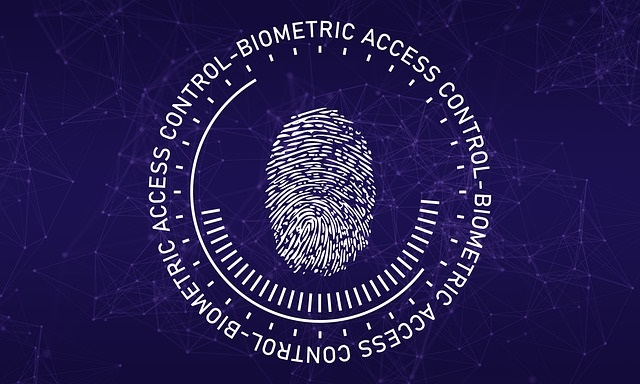Fortinet Acquires Next DLP Strengthens its Top-Tier Unified SASE Solution
Read the release

Insider threat management is becoming an increasingly important component of an organization’s comprehensive cybersecurity posture. The threats posed by individuals inside a company can be just as dangerous as those presented by external cybercriminals, and as such, organizations need to implement multiple measures to defend against insider threats.
The extent of the risks created by insider threats is evident in statistics gathered from a 2023 survey of worldwide Chief Information Security Officers (CISO). Deliberate and accidental insider threats are considered a significant risk by 30% of respondents, making it the second greatest cybersecurity concern of CISOs after email fraud.
In this post, we’ll discuss five best practices companies can implement to minimize the risk of insider threats.
In this article:
 |
Running a business requires that at least some individuals have access to its valuable and sensitive data and information technology resources (which also makes it important to identify potential insider threats). Unfortunately, while viable business operations cannot be maintained without providing this access, employees or contractors can misuse this access and potentially cause significant damage.
Organizations must also protect themselves from both deliberate and accidental insider threats. The following measures can help mitigate insider threats and protect a company’s assets.
 |
An organization has to know where its valuable and sensitive information is stored and processed for it to be effectively protected. The environment should be inventoried to identify resources, and data elements should be categorized according to their value and sensitivity.
Access to critical systems or databases containing regulated customer data must also be restricted and only allowed for legitimate business needs.
This essential first step provides the foundation for all subsequent measures taken to minimize insider threats, and a thorough understanding of the critical data resources and systems that need to be restricted from general use is necessary to secure them from insider threats.
 |
Once the resources that need to be protected are identified, an organization needs to lock down access by implementing and enforcing strong authentication and authorization policies. Only individuals with business justifications should be able to access and use high-value data.
The following elements should be included in these policies to ensure user credentials are not compromised and misused:
 |
This measure is valuable for identifying the signs of deliberate insider threats. Some of the more common insider threat indicators include:
While the above indicators do not provide proof of insider threats, this employee behavior should be taken seriously and addressed by security teams and management. Individuals exhibiting these indicators may warrant being closely monitored before they compromise company resources.
Additionally, an effective insider risk program should focus on addressing the root causes of insider threats indicated by these concerning behaviors, such as employee dissatisfaction or lack of proper training.
 |
Accidental insider threats can be managed and minimized by emphasizing secure data handling policies. As part of an insider threat program, companies should create a data handling policy that specifies who can use resources and for what purpose. The policy should be fine-grained and apply to everyone in the organization so they understand their role in protecting company resources.
Training and education needs to be provided to everyone regarding the data handling policy. Sufficient education helps reduce the incidence of accidental or unintentional insider threats, as employees will know the limits to their data access and use it appropriately.
Repeated violations of the data handling policy typically point to an employee who needs additional training or who poses a deliberate insider threat.
Implementing a data loss prevention (DLP) platform helps organizations monitor user activity and defend against insider threats in multiple ways. The functionality of modern DLP software, such as the Reveal platform by Next, protects an organization from the risks of accidental and deliberate insider threats in the following ways:
Talk to the experts at Next and take Reveal for a test drive to see how this advanced DLP solution protects your organization from insider threats.
Insider risk management is a process that involves identifying and mitigating potential risks posed by individuals within an organization who have authorized access to sensitive information or systems. It includes measures to prevent and detect insider threats, such as employees or contractors who may intentionally or unintentionally cause harm to the organization's data, systems, or reputation.
An insider threat management program is a centralized and coordinated group of capabilities designed to detect and prevent the unauthorized disclosure of sensitive information. It is organized and managed to address the risks posed by insiders who have authorized access to an organization's systems, networks, or data.
An insider threat management program typically includes a combination of policies, procedures, technologies, and training to effectively manage and respond to insider threats.
The realities of remote work significantly complicates identifying insider threats, as many employees use personal devices to access company resources that may be used to initiate accidental or intentional data breaches.
An automated DLP solution helps address these complications by enforcing data handling rules for all employees on all devices. Only authorized users will be able to access high-value data from remote locations.
Training alone provides only limited effectiveness when addressing the risk of deliberate insider threats, as motivated malicious insiders may find ways to circumvent the protective measures put in place.
Training can, however, make a potential deliberate insider threat reconsider their actions when they realize a DLP platform will prohibit violations of the data handling policy. They may decide it is not worth the risk of getting caught attempting to compromise data resources.
A former employee may attempt to leverage their past authorization to compromise sensitive resources after they have left the company. Therefore, when an employee resigns, all of their user IDs should immediately be deleted from all systems.
Simply suspending these IDs may not be sufficient if the former employee still has friendly connections in the organization who can reactivate them.

Blog

Blog

Blog

Blog

Resources

Resources

Resources

Resources
